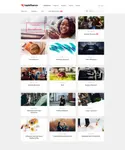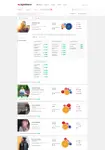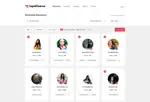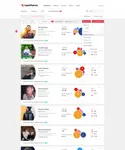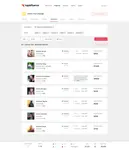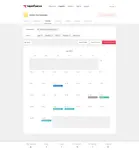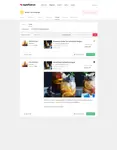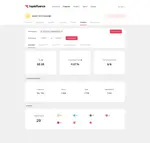
Overview
TapInfluence, as a brand, has been around since 2013. Prior to that, the company was called Blog Frog. The idea behind Blog Frog’s original offering was a simple one: provide a tool to connect bloggers with other bloggers, and then leverage these combined communities to sell banner ads to companies looking to connect with targeted audiences. Of course, just about any company trying to sell brands on influencer marketing will tell you that traditional digital marketing (i.e banner ads) are a losing proposition. With click-through rates at less than one percent, the digital marketing industry has long since abandoned this method of advertising.
So when TapInfluence boasts about their campaigns resulting in an 11x increase in ROI using their influencer marketing platform, you’d better believe they know what they’re talking about. The evolution of Blog Frog to TapInfluence likely has a backstory of companies being unhappy with the results of their banner ad campaigns. And those steering the ship at TapInfluence deserve credit for the major course-correction of leaving banner ads behind. Refocusing the company’s mission towards content marketing through social media influencers looked like a good idea back in 2013, and it certainly looks even better in hindsight.
Today, TapInfluence is one of the more recognisable names in the influencer marketing platform space. They boast an impressive list of clients, with huge names like Whole Foods, Seiko, Canon, Volvo, and Target. Their head of product marketing, Laura Smous, was a featured speaker at last year’s Influencer Marketing Days conference in New York City. By all appearances, the company looks to be the answer to the question of who is influencing the influencers.
Summary: Quick Jump Menu
Pricing
TapInfluence offers three different levels of service, geared toward different needs.
- Standard, $1999/mo — This price is no longer published on the website, and I spoke with someone at TapInfluence he informed me that this price was going down. This is a self-serve plan that grants subscribers access to their software platform, currently called TapExchange. The marketplace allows for the search and recruitment of the influencers found in their opt-in network, along with the underlying data about their past performance. Also included are content scheduling and workflow tools to manage campaigns, performance metrics on those campaigns, as well as a mechanism to work out fees and pay them.
- Enterprise, custom pricing — With Enterprise, brands work directly with the TapInfluence team to develop and strategise their marketing plans, and find the right influencers to execute on those plans.
- Agency, custom pricing — TapInfluence works directly with marketing agencies that want to add influencer marketing to their mix of services. TI provides guidance on pitching and winning clients, how to calculate and deliver on ROI goals, and how to scale out their marketing goals.
They also offer an add-on service called TapFire, which is a way of amplifying content (more on that in details). For Standard plan holders, there’s an extra cost associated with this, but that’s more based on your budget: how much do you want to spend to push your content even further? Since Enterprise and Agency plans offer custom pricing, TapFire is something that can likely be baked into the price of the plan.
My biggest gripe with TapInfluence is the onboarding process, starting with the first request for a demo. For those interested in giving the software a test drive, there are plenty of clickable buttons all over TapInfluence’s website that encourage you request a demo. When I attempted to get a demo, I filled out their form, gave them my email address, and then received a confirmation email informing me:
Being that we are an end-to-end Enterprise solution, we do require an investment of at least $25K per quarter. Is that in your range? If so, I'd be happy to schedule a strategy session to build out your custom solution. Otherwise, please feel free to connect when you're ready to take your marketing to the next level.
That’s a pretty weird thing to say in an automated welcome email, especially since I was looking to test drive a software subscription valued at $2k per month. Why do I need to spend another $6,333 each month? And if they are an “end-to-end Enterprise solution,” is there more to the Standard plan that’s not mentioned on their pricing page? It’s a confusing and off-putting way to welcome someone. I was able to confirm, however, that yes: if you want just self-service access to the platform, the monthly subscription fee is all you need to pay. Those bigger budget numbers are aimed strictly at Enterprise and Agency clients.
The Details
First impressions aside, my demo through TapInfuence’s software was impressive enough that it’s worth any hassle you might experience getting signed up. Every aspect of the platform was thoughtfully created, with attention paid to the details. I’ll sum up the main features and then discuss some key differentiators after that.
- Influencer Search: The search function appears to be fairly robust, allowing users to discover influencers via their audience’s demographics and interests. If you want to reach females aged 25 - 34 interested in film photography, that’s possible. The audience information looks to go deeper than that, with their other interests, brand affinities, favorite TV shows, etc. Finally, the search shows you the influencers’ performance history (in terms of engagement with their content), as well as their rates for various projects. You’ll even get an estimated “cost per engagement” based on that.
- Influencer Outreach: The pool of talent found within TapInfluence boasts over 100,000 influencers—and they’ll help you recruit new ones if you’ve got your on someone you found through other means. Since it’s an opt-in network, you can rest assured that everyone has been vetted and validated before being added. It also means there are no barriers to getting in touch with them. You’re all working within the same platform, so communication and rate negotiation all happens in one place.
- Analytics: For any content you’ve created with your influencer, you can view key metrics as to its performance. You can see basic info about reach, views, and engagement. Cost per engagement stats give you a good idea of what you spent for each individual interaction with the influencer’s audience. And if there were specific sales goals around a campaign, the ROI calculator lets you know whether it was worth it. Maybe. More on that below.
- Campaign Management: This is where TapInfluence’s value as a self-service platform is cemented. By far, it’s the most comprehensive set of campaign management tools I’ve seen, and deserves to be discussed outside of a bulleted list.
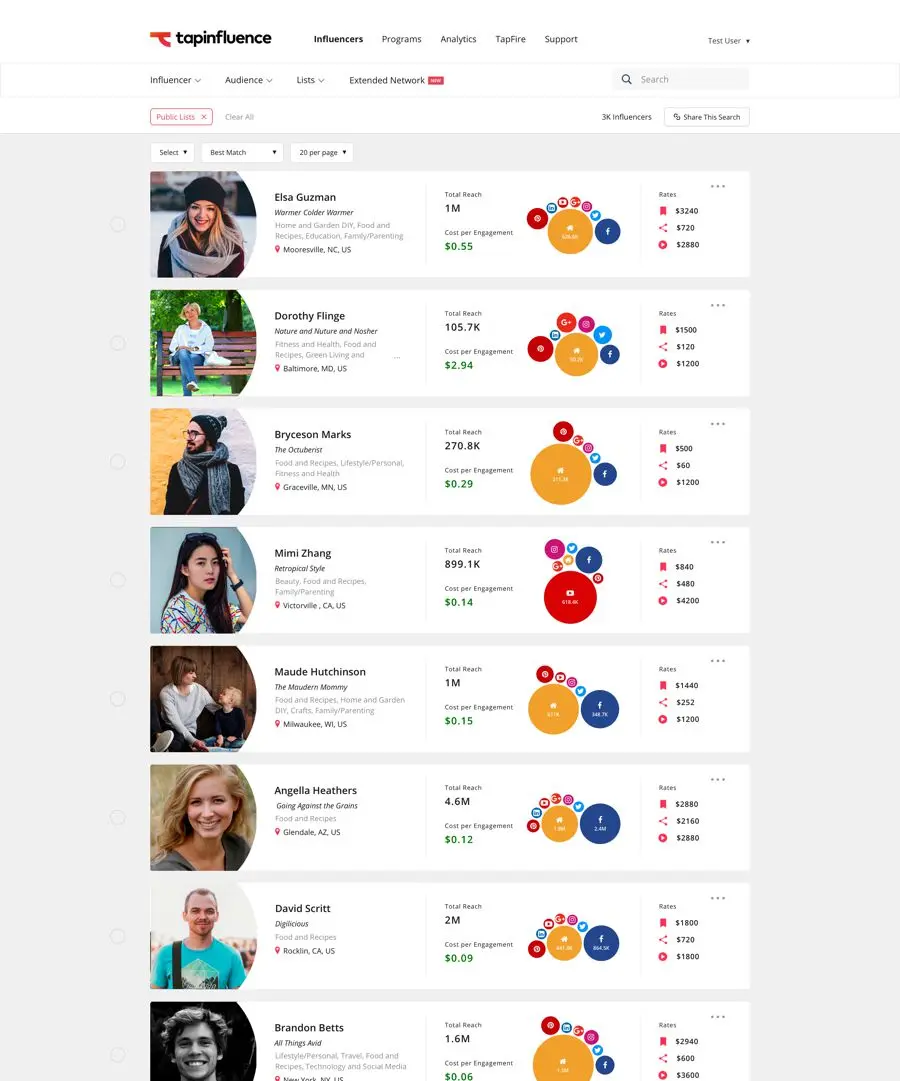
So let’s carry on here, in the main body of the text.
When platform providers talk about the benefits of using software to manage (and even automate) some parts of your influencer marketing campaigns, they stress the ability to scale. That is, the software makes it possible for you to work with more influencers, on multiple campaigns, than you would be able to manage assisted only by an excel spreadsheet. And it’s true: even a bare bones platform with minimal management tools makes it possible to scale. But TapInfluence makes it easy.
Right from the start of any campaign, during the influencer discovery period, the ability to reach out to influencers, receive their proposals, and negotiate fees is all contained within a well-organised and easy-to-look at interface that ensures you’ll never get lost inside your own marketing efforts. Arriving at agreeable terms is simple, and the platform makes it possible to spell out the terms and requirements for each project. If a brand wants certain language to appear at the end of a post—creating a continuity of messaging across influencers, as well as any legal disclaimers—it’s a matter of editing some fields and ticking off a box. All other requirements, from the post content, to the channels you’re broadcasting to, can all be spelled out in advance and act as a contract with the influencer (they call it the TapInfluence Influencer Agreement). There is also a collaboration tool, where brands/agencies can review any content before it’s posted, make suggestions for changes, or point out that certain terms of the agreement weren’t adhered to. It’s all very transparent, and benefits both sides of the equation.
Once you’ve got your army of influencers creating content, scheduling each post can be done within the management area. There’s a nice visual calendar that shows each post in its timeslot. It’s also a good representation of how easy it makes to scale our your marketing. With multiple campaigns going, each with maybe dozens of influencers, that calendar can get to looking really busy, really quickly. You can easily filter down by assignments (this is a subcategory within your campaign) or post status (Open, Scheduled, Draft, Posted, Overdue, etc.). You can drill down to any post in a matter of seconds to look at exactly what you wanted to. Really, the organisation of the campaign management over all is so thorough that you’ll never waste time searching for the data you’re looking for.
On that topic of data: TapInfluence’s reporting mechanism is characteristically thorough. You can track all the performance metrics you’d expect—like reach, engagement, cost per engagement—but it’s the ROI calculator that’s the one area of TapInfluence that I’m not so sure about. That’s because of a little variable you plug into the calculation called “Media Value.” The media value is defined as what it would have cost to reach the same number of people using traditional marketing methods. That number forms the basis of all values that are calculated to reach a “Total Media Value.” And the TMV forms the basis of the equation for calculating ROI. This isn’t, of itself, a problem—and for a smaller brand working within the self-service platform it’s actually a pretty useful tool. The problem I see with basing numbers on a cost the user gets to decide is in how that might be used by an agency. Really, they can fiddle with those numbers anyway they want to maximise the reported ROI. “We would have charged you X for a similar reach, but you only spent Y.” There’s a very real potential for abuse there. What users do with the data they get isn’t on TapInfluence’s shoulders, but also remember that TapInfluence uses the same equations to prove their service’s worth. Those who are buying into the service at the Enterprise or Agency level would do well to stay involved in the discussions over media value.
Finally, a high point: the TapFire service. As I mentioned earlier, it’s a way of amplifying content to reach new audiences with a minimal amount of work. The premise behind it is simple. After identifying your best performing content from existing campaigns, you can redeploy it through TapFire. You set a budget, and a desired reach, identify the content, and everything else is handled behind the scenes. Based on the demographics of those who engaged and responded to the original post, the software identifies influencers with similar audiences. These influencers then share out the original content and the campaign breathes new life in the social media feeds of entirely new audiences, at a fraction of what the original campaign cost (also a fraction of what seeking new influencers/new content). It’s a quick and painless way to get more out of your marketing budget.
Conclusion
This is the updated version of our TapInfluence review. The first version was written largely based off of TI’s promotional materials—the website and PDF brochures, as well as my own experiences in my failed attempt to get them to provide a demo of the software. I couldn’t give an overwhelmingly positive review because of that, and concluded the “Details” section this way:
Between all that the platform offers, TapInfuence’s roster of impressive clients, and their published case study showing an ROI that most marketers would be jealous of, I felt it fair to give them 3.5 stars. I’m reasonably confident that watching the software in action will push that rating higher.
And now I’ve seen the software in action, it pushed the rating higher. TapInfluence’s platform really is end-to-end, even for non-enterprise customers, and lives every bit up to the hype that surrounds the company. From discovery, to campaign management, to reporting, they’re doing it all, and doing it well. Highly recommended.
TapInfluence - Influencer Marketing Platform
-
Features
-
Ease of Use
-
Reporting
TapInfluence
TapInfluence is the leading influencer marketing automation solution for brands and agencies.



